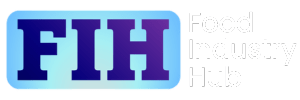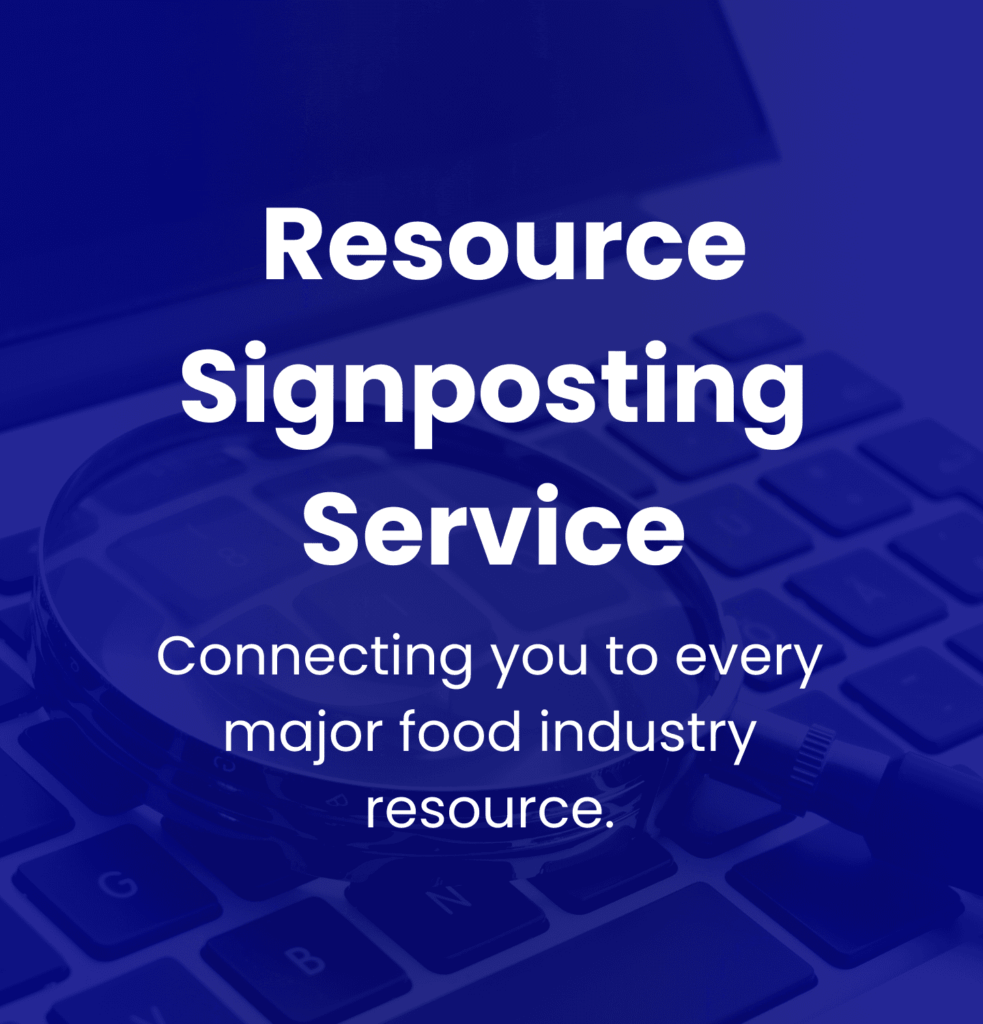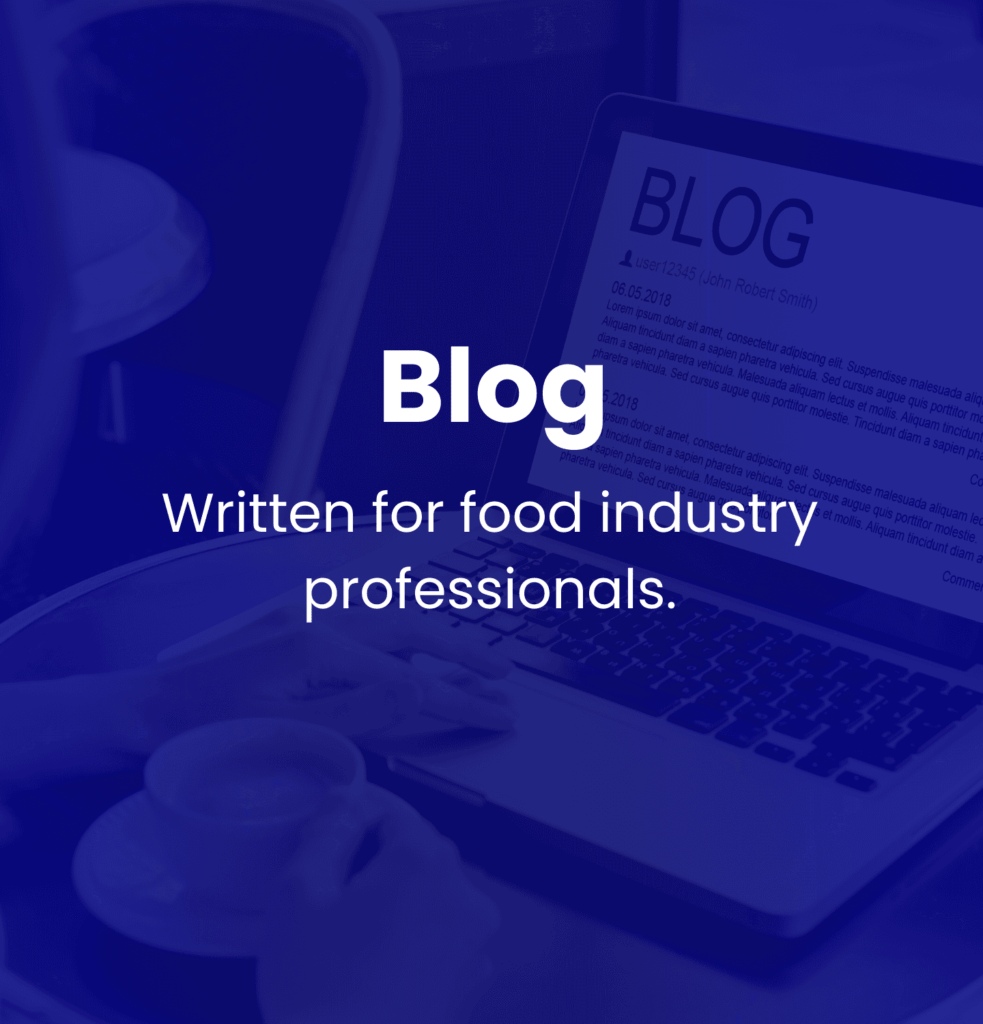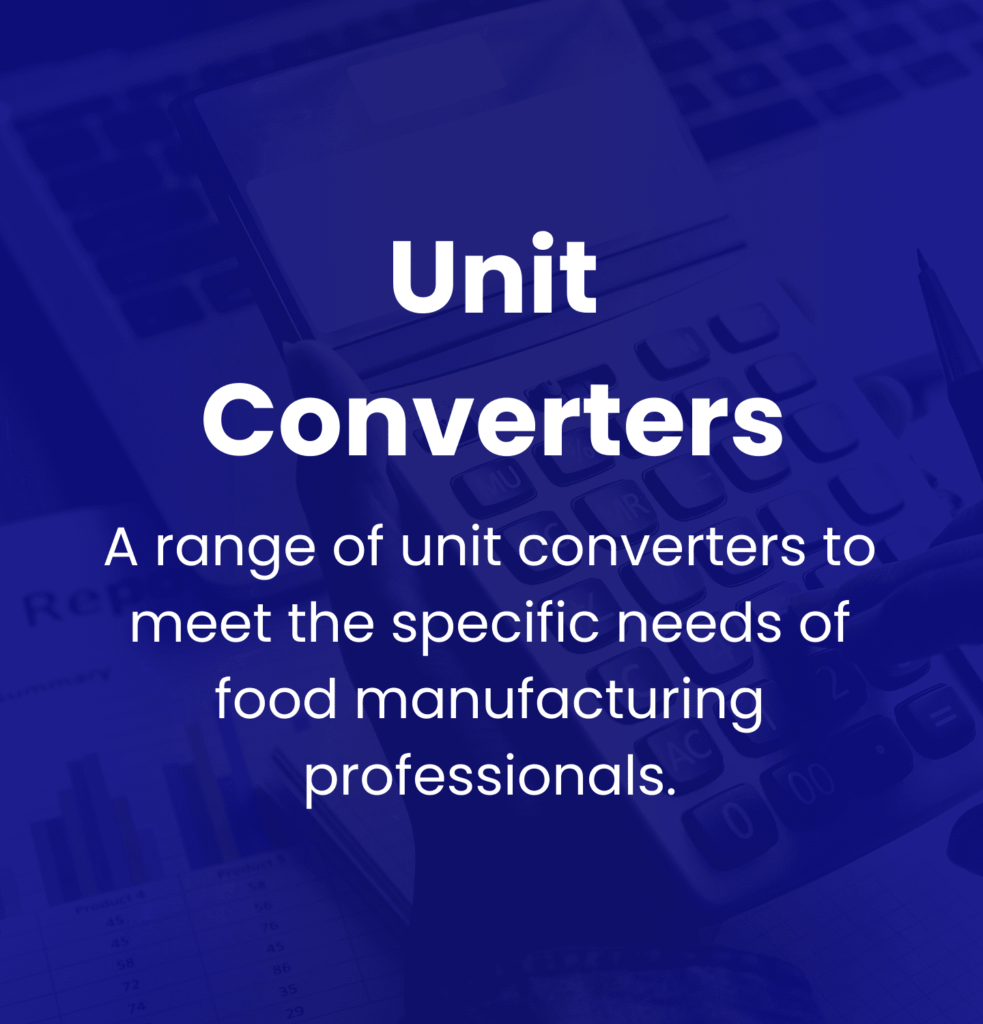Introduction
In the food manufacturing industry, your grasp of essential technical skills can mean the difference between stagnation and career advancement. Your proficiency in areas such as HACCP principles, record-keeping, fault resolution, and GMP implementation is pivotal for ensuring product safety and compliance. But how do these technical skills truly shape your journey towards success in this industry? Let’s dissect the critical components and explore their impact on your professional trajectory.
This post is part of a collection we’ve put together to explore the topic of professional success, and you can explore the topic in more detail by browsing the related content.
Table of Contents
Key Takeaways
- You have to have proficiency in HACCP principles for food safety.
- You need a strong understanding of industry regulations and compliance.
- It pays to be skilled in fault resolution and root cause analysis.
- You need the ability to write and approve food specifications accurately.
- Knowledge of GMPs, pest control, and quality control points.

Research And Information-Gathering Skills for Technical, Regulatory, And Awareness of Emerging Risks
To excel in food manufacturing, you must continuously update your understanding of scientific and technical advancements. Stay well-versed in industry standards and regulations to ensure compliance and quality control.
Being proactive in identifying and addressing emerging risks, such as raw material authenticity concerns, is crucial for maintaining product integrity- so it’s really important to develop the ability to stay well informed in these areas.
For sites operating to the BRCGS Food standard, clause 1.1.8 specifically requires evidence of awareness and review of these developments, and the expectation is mirrored through equivalent assurance schemes – so you should consider your ability to stay abreast of updates and developments to be mandatory as a technical professional.
Staying Abreast of Scientific and Technical Developments
Keeping up with scientific and technical advancements is crucial for success in the food industry. This requires strong research and information-gathering skills to stay informed about new changes and advancements.
To achieve this, you must cultivate a proactive approach to research, constantly seeking out reputable sources of information such as scientific journals, industry publications, regulatory websites, and professional networks.
By monitoring these sources regularly, you can stay ahead of evolving trends, emerging technologies, and potential risks that may impact your operations. Developing a keen awareness of industry advancements can provide you with a competitive edge, enabling you to adapt quickly to changes and make informed decisions that benefit your organisation.
Familiarity With Industry Codes of Practice
Familiarity with codes of practice (COPs) is essential for any technical professional looking to get ahead in the food industry.
By staying informed about the latest industry regulations, you can proactively adapt your practices to meet the required standards and avoid potential penalties or reputational damage.
Retailer-driven codes of practice can represent the latest in best practice across the food industry, so a working familiarity with these standards can put you at the front of the curve for quality assurance and operational safety.
Alongside the practical advantages to familiarising yourself with codes of practice, it must be said that knowledge of COPs is essential if your site operates in compliance with those standards.
To stay ahead in your career and contribute to the success of your organisation, it’s essential to prioritise staying informed about industry codes of practice and integrating them into your daily operations.
Finding Out About New Risks to Authenticity of Raw Materials
Remaining vigilant about emerging risks to the authenticity of raw materials necessitates continual research and information gathering.
Regularly monitoring industry publications, attending relevant conferences, and engaging with industry experts are effective ways to stay informed about new risks for fraud risk mitigation.
Utilising online platforms such as regulatory websites can also provide valuable insights into emerging threats. Collaborating with suppliers to understand their sourcing and quality control processes can further enhance your awareness of potential authenticity risks.
Establishing a network of professionals within the field can facilitate the exchange of information and best practices. By actively seeking out information on evolving risks to raw material authenticity, you can better prepare your organisation to address and mitigate these challenges effectively.
All of this will position you to be able to confidently risk-assess your raw materials and supply chain for authenticity risks – and introduce appropriate mitigation measures.
Being Conversant with Relevant Legislation
To effectively navigate the regulatory landscape and stay informed about emerging risks in the food manufacturing industry, it’s imperative to be well-versed in relevant legislation and possess strong research and information-gathering skills. Understanding the laws and regulations that govern food production, labelling, and safety is crucial for ensuring compliance and upholding quality standards.
Research and information-gathering skills are essential for keeping abreast of evolving regulatory requirements and emerging risks in the industry. This involves regularly monitoring updates from regulatory bodies, industry publications, and attending relevant training sessions or seminars.

HACCP Skills
To excel in the food manufacturing industry, you must grasp the fundamentals of HACCP, ensuring the safety of products.
Applying your HACCP skills on the factory floor is crucial for controlling hazards and maintaining product safety.
Understanding and mitigating product safety risks through HACCP implementation will set you apart as a competent professional in the field.
Understanding HACCP
Understanding HACCP principles is essential for ensuring food safety in the manufacturing industry.
HACCP, which stands for Hazard Analysis and Critical Control Points, is a systematic approach to identifying, evaluating, and controlling food safety hazards. This methodology is crucial in preventing risks that could compromise the quality and safety of food products. By comprehending HACCP principles, you gain the ability to assess potential hazards at each stage of the food production process, from receiving raw materials to distributing finished goods.
To understand HACCP effectively, you must grasp the seven principles it’s based on.
The seven principles include conducting a hazard analysis, determining critical control points, establishing critical limits, monitoring procedures, corrective actions, verification procedures, and record-keeping processes.
Being well-versed in these principles equips you with the knowledge and skills necessary to develop, implement, and maintain a robust food safety system within a food manufacturing setting.
Applying Your HACCP Skills In the Factory
Implementing your HACCP skills in the factory requires a thorough understanding of the seven key principles and their practical application in the food manufacturing process.
The seven principles include conducting a hazard analysis, determining critical control points, establishing critical limits, monitoring procedures, corrective actions, verification procedures, and record-keeping processes.
To apply your HACCP skills effectively, you must be able to identify potential hazards in each step of the food production process, enact control measures to prevent these hazards, and implement monitoring procedures to ensure these controls are consistently met.
You need to be proactive in addressing any deviations from the critical limits set, maintaining accurate records, and verifying that the HACCP system is working as intended – so a working competency in HACCP really is an essential technical skill.
Understanding And Mitigating Product Safety Risks
A solid understanding and proactive approach to mitigating potential hazards are key to utilising your HACCP skills effectively.
Understanding the principles of HACCP, such as conducting hazard analysis, determining critical control points, and implementing corrective actions, is essential for safeguarding consumers and maintaining regulatory compliance.
To effectively mitigate product safety risks, you must be proficient in identifying potential hazards at each stage of the food production process. This includes assessing raw materials, monitoring food handling practices, and ensuring proper sanitation procedures are followed.
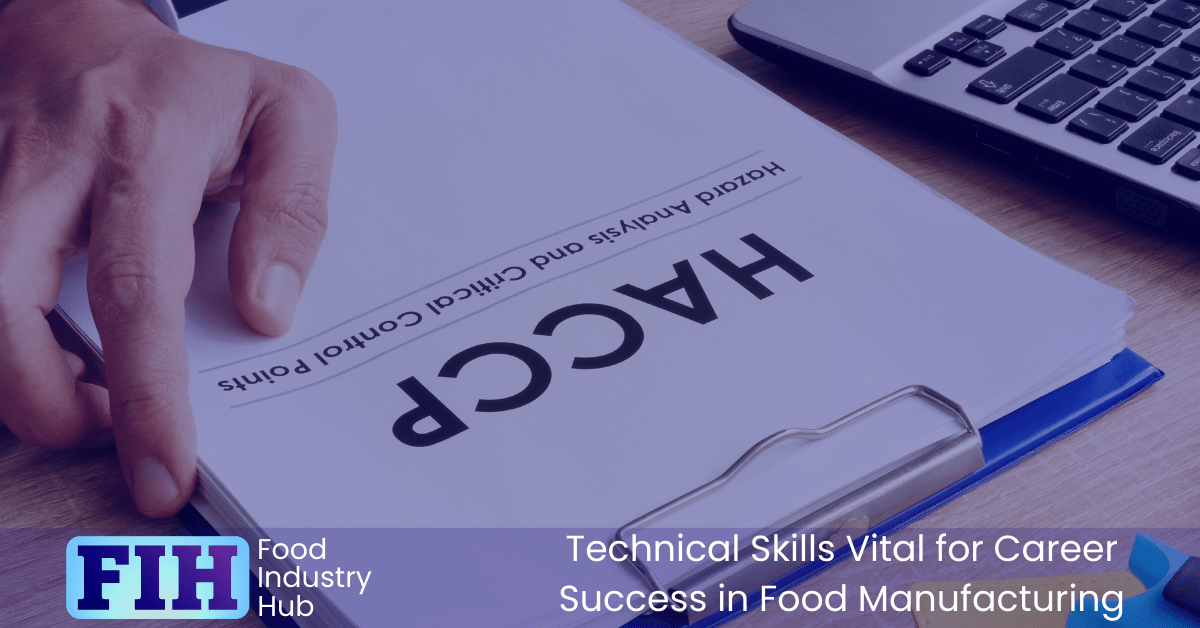
Record-Keeping and Information Processing for Quality Standardisation
You need to understand the importance of identifying the necessary process information to be recorded in food manufacturing operations.
By interpreting these records and promptly addressing any quality deviations, you can ensure that products meet the required standards.
Improving processes to minimise variation is essential for maintaining consistent quality in food manufacturing.
Identifying What Process Information Needs to Be Recorded in Food Manufacturing Operations
Properly recording process information in food manufacturing operations is essential for ensuring quality standardisation and operational efficiency. When identifying what process information needs to be recorded, it’s crucial to focus on key parameters that directly impact product quality and safety. This includes recording details such as:
- Ingredient measurements
- Production temperatures
- Processing times
- Equipment calibration checks
- Cleaning records
By documenting these process variables, food manufacturers can maintain consistency in product quality, adhere to regulatory standards, and facilitate troubleshooting in case of deviations.
Capturing data on product traceability, lot numbers, and stock movements is vital for quality control and compliance purposes. Understanding the specific information that needs to be recorded at each stage of the manufacturing process ensures that all relevant data points are captured accurately.
Implementing a robust record-keeping system not only enhances quality assurance but also enables continuous improvement initiatives by providing valuable insights for improvements to production processes.
Interpreting Records and Responding to Quality Deviations
Interpreting recorded data and promptly responding to deviations in quality is a critical aspect of maintaining standardisation and efficiency in food manufacturing. When reviewing records, pay close attention to key indicators such as temperature logs, production volumes, and quality control checks.
By interpreting these records accurately, you can identify deviations from the expected quality standards. Once a quality deviation is detected, it’s important to respond promptly to address the issue before it escalates. This may involve halting production, conducting root cause analysis, and implementing corrective actions to prevent similar deviations in the future.
Effective communication with relevant team members is essential to coordinate responses and ensure swift resolution of quality deviations. Utilising data analysis tools and trend tracking can also aid in identifying patterns that may lead to potential deviations, allowing for proactive measures to be implemented.
Interpreting records and responding promptly to quality variations are key skills that contribute to maintaining high standards and operational efficiency in food manufacturing.
Improving Processes to Reduce Variation
A focus on accurate and comprehensive record-keeping and information processing is imperative to standardise product quality and reduce variation in manufacturing processes. Accurate record-keeping serves as the backbone for identifying trends, deviations, and areas for improvement.
In addition to meticulous record-keeping, effective information processing is essential for standardising quality across product batches. Using data analytics tools can help you identify patterns in production data, allowing for proactive adjustments to minimise variability. By streamlining information processing workflows, you can quickly respond to deviations, maintain quality standards, and enhance overall operational efficiency.
In all, record-keeping and interpretation skills stand as core competencies required from technical professionals. They’re essential for product quality control, and compliance with both regulatory and voluntary assurance standards.
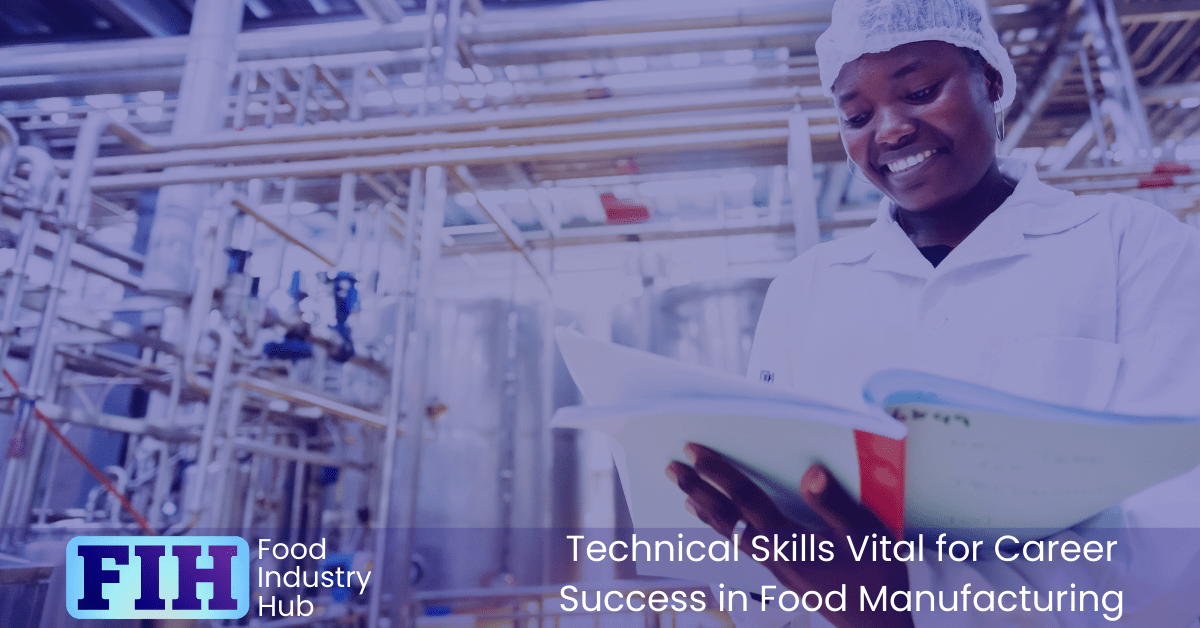
Sign-up for the Food Industry Hub Mail Service
We regularly produce new content for food industry professionals, and the Food Industry Hub Mail Service is the best way to stay up to date with the latest additions.
Signup today to be added to the Food Industry Hub mailing list.
Internal Auditing Competency
You need to grasp the purpose and significance of internal audits within food manufacturing.
By understanding compliance requirements and non-compliance indicators, you will be equipped to evaluate the degree to which your site is adhering to the compliance scheme(s) is has committed to.
Gathering objective evidence and documenting outcomes are crucial steps in maintaining carrying out audits, and doing so should be used to facilitate continuous improvement in the manufacturing process and internal governance systems.
Understanding The Purpose and Importance of Internal Audits
Internal audits serve as systematic and independent examinations of a company’s operations to evaluate adherence to internal policies and procedures, industry regulations, and quality standards.
By conducting internal audits, organisations can identify areas of improvement, assess risks, and ensure that processes are in line with best practices.
Internal audits play a significant role in enhancing transparency, accountability, and operational efficiency within food manufacturing facilities. They help in detecting discrepancies, mitigating risks, and promoting a culture of continuous improvement.
Internal audits provide valuable insights that enable management to make informed decisions and implement corrective actions promptly.
Understanding the purpose and importance of internal audits equips professionals with the knowledge and tools needed to uphold quality, safety, and compliance standards. Developing proficiency in internal auditing is essential for fostering a culture of excellence and driving organisational success in the food manufacturing industry.
Identifying Compliance and Non-Compliance
The ability to pinpoint instances of compliance and non-compliance is fundamental to your ability to carry out an audit. Identifying compliance involves recognising adherence to established standards through objective information-gathering.
Detecting non-compliance, on the other hand, entails uncovering deviations from these standards, which could pose risks to product quality, safety, and regulatory requirements.
Auditors must possess a keen eye for detail and a comprehensive understanding of relevant guidelines. This includes being able to interpret complex assurance schemes and compliance standards, evaluate processes objectively, and effectively communicate findings to stakeholders.
Gathering Objective Evidence
Gathering objective evidence is essential for evaluating compliance and non-compliance accurately. Internal auditors must possess the competency to collect tangible proof that’s unbiased and factual. This evidence serves as the foundation for determining whether processes align with regulatory requirements and industry standards.
When gathering objective evidence, auditors should focus on obtaining data that’s measurable, observable, and verifiable. This includes documented records, test results, photographs, and direct observations. By relying on concrete evidence rather than subjective opinions, auditors can provide an accurate assessment of a facility’s adherence to food safety protocols.
The ability to gather objective evidence demonstrates a high level of attention to detail and analytical skills. Auditors must meticulously document their findings to support their conclusions and recommendations effectively. Developing this competency is crucial for ensuring the credibility and reliability of internal audits.
Documenting Outcomes
Your role in documenting outcomes involves accurately detailing the results of audits, inspections, and evaluations conducted within the facility.
To excel in this competency, you have to maintain meticulous records that clearly outline the identified issues, non-conformities, and areas of improvement. By documenting outcomes in a structured manner, you provide valuable insights that support decision-making processes aimed at enhancing operational efficiency and maintaining regulatory compliance.
Your documentation shouldn’t only highlight the discrepancies found – you also need to record observations of compliance. The audit write-up should form an unbiassed assessment of compliance and non-compliance. The intention is to produce an audit report, not just a list of non-conformities.
Internal auditing should be carried out by a multi-disciplinary team of internal auditors – so it shouldn’t be thought of as an exclusively technical area of ownership… Though internal auditing certainly stands out as an essential technical competency.

Specifications Writing and Approval Skills
You must possess a keen understanding of the contents of a food specification and able to spot any discrepancies or contradictions that may compromise the validity or dependability of the document.
It’s essential to grasp quality standards, defect limits, and potential risks to product safety.
Additionally, you should be proficient in writing accurate food specifications, ensuring clarity and adherence to industry standards.
Familiarity With the Contents of a Food Specification
Understanding the components and intricacies of a food specification is essential for mastering specifications writing and approval skills. A food specification is a detailed document that outlines the precise requirements for a food product, including ingredients, processing methods, packaging, and quality standards.
This knowledge is crucial for ensuring that the final product meets all regulatory requirements, quality standards, and consumer expectations.
Having a deep understanding of a food specification also allows you to effectively communicate with various stakeholders involved in the production process, such as production staff and quality control teams.
Familiarity with the contents of a food specification is a foundational skill for any technical professional working in food manufacturing, as it forms the basis for creating high-quality products that meet industry standards.
Identifying Discrepancies and Contradictions Within a Food Specification
To ensure the accuracy and compliance of a food product, you must skilfully pinpoint any inconsistencies or contradictions existing within a food specification. This task is crucial, as it directly impacts the quality and safety of the final product.
When analysing a food specification, pay close attention to details such as ingredient quantities, processing methods, packaging requirements, and quality standards. Look for discrepancies between different sections of the specification, and any supporting documents.
Use your specifications writing and approval skills to carefully review each aspect of the food specification and collaborate with relevant stakeholders to resolve any discrepancies effectively.
Understanding Quality Standards, Defect Limits, And Risks to Product Safety and Quality
An in-depth grasp of quality standards, defect limits, and potential risks to product safety and quality is paramount for those looking to develop specifications writing and approval skills. Understanding the intricate details of quality standards ensures that the products meet regulatory requirements and consumer expectations.
Defect limits play a crucial role in determining the acceptable level of imperfections in the final product, safeguarding its quality and safety. By being knowledgeable about defect limits, you can prevent substandard products from reaching consumers, protecting both the company’s reputation and public health.
Assessing Acceptability, and Knowing When Not to Approve a Specification
Having a keen eye for detail and a thorough understanding of quality standards, defect limits, and risks to product safety and quality will guide you in assessing the acceptability of specifications and knowing when not to approve them.
When evaluating specifications, it’s crucial to consider factors such as ingredient quality, allergen control, microbial limits, and compliance with regulatory requirements. Any deviation from these standards could pose significant risks to consumer health and brand reputation.
To determine the acceptability of a specification, you must meticulously review each component to ensure it aligns with industry best practices and legal standards. If you identify any inconsistencies, deviations, or potential hazards that could compromise product quality or safety, it’s imperative not to approve the specification.
Your decision-making process should be informed by a combination of technical expertise, regulatory knowledge, and a commitment to upholding the highest standards of quality assurance in food manufacturing. You should also be cognisant of your site’s HACCP requirements and limitations for raw materials, as well as any customer code of practice demands such as sustainability or compositional demands.
The Ability to Write a Food Specification
Developing the ability to write a comprehensive food specification requires a deep understanding of product requirements, quality standards, and regulatory guidelines. When crafting a food specification, you must meticulously outline every aspect of the product, including ingredients, nutritional content, packaging materials, and shelf-life expectations.
Clearly define the product characteristics, such as flavour profile, texture, colour, and size, to communicate your expectations to suppliers and production teams accurately. Incorporate any specific quality control measures and testing protocols intended to maintain consistency and safety standards.
Pay close attention to regulatory requirements, allergen declarations, and labelling guidelines to guarantee compliance with industry regulations. Regularly review and update food specifications to reflect any changes in ingredients, processes, or regulations.
Mastering the skill of writing precise and detailed food specifications is crucial for ensuring product integrity and meeting consumer expectations.
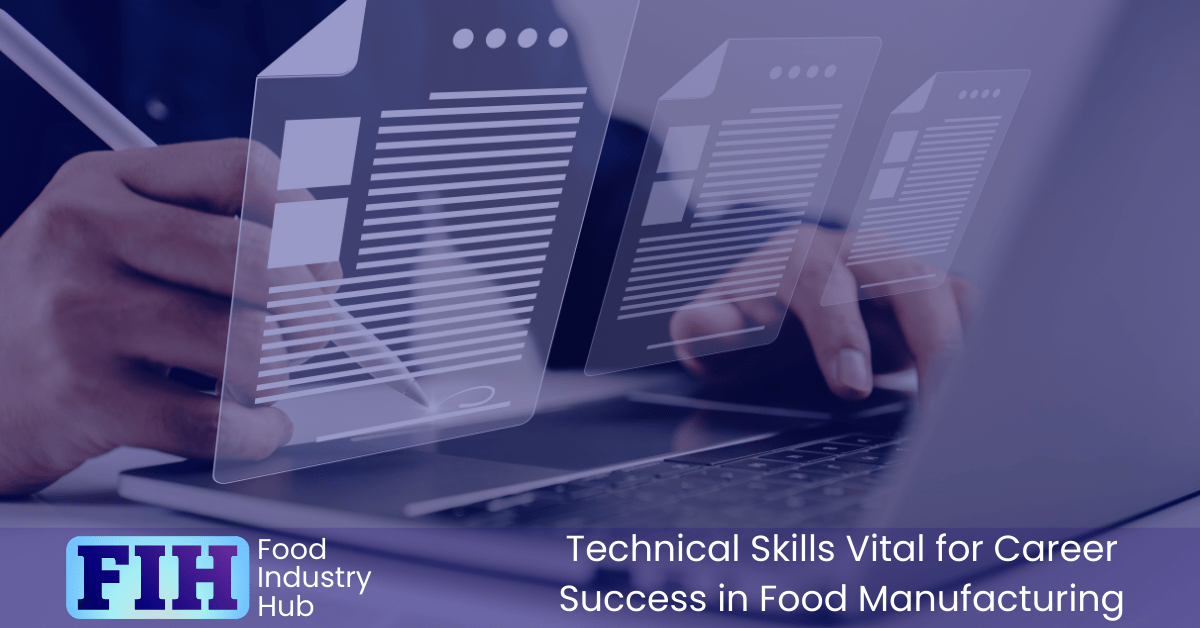
Fault Resolution and Root Cause Analysis
To excel in the food manufacturing industry, you must be adept at identifying faults and swiftly implementing corrective actions. Understanding the causes and weaknesses within the quality management system is crucial for effective problem-solving.
Utilising root cause analysis techniques allows you to pinpoint the root issues and proactively address them to prevent future occurrences.
Identifying Faults, And Implementing Corrective Actions
Incidents and non-conformities can arise from a range of different sources throughout operations. When a fault is detected, it’s essential to promptly address it to prevent potential disruptions and product defects. Implementing corrective actions involves a systematic approach to resolve the issue effectively.
To begin, a thorough analysis of the fault should be conducted to understand its root cause. This may involve examining equipment, processes, and human factors that could contribute to the problem. Once the root cause is identified, a corrective action plan can be developed. This plan should outline the specific steps to be taken to rectify the fault and prevent its recurrence.
During the implementation phase, it’s important to monitor the effectiveness of the corrective actions taken. Regular follow-ups and evaluations should be conducted to ensure that the fault has been successfully addressed.
Determining Causes and Implied Weaknesses in The Quality Management System
Understanding the causes and implied weaknesses in the quality management system is essential for effective fault resolution and root cause analysis. By addressing the root of issues, you can prevent them from recurring and enhance overall quality.
When faced with a problem, start by identifying the specific fault and its impact on the product or process. Then, analyse the quality management system to pinpoint potential weaknesses that may have contributed to the issue. This could involve examining procedures, control systems, documentation, training programs, or communication channels.
Once you have identified the causes and implied weaknesses, prioritise them based on their impact and likelihood of recurrence. Implement corrective actions that address these root causes to prevent future faults.
Using Root Cause Analysis to Target Preventative Actions
Analysing root causes through fault resolution and root cause analysis is pivotal in targeting preventative actions to enhance the quality management system in food manufacturing. By delving deep into the underlying reasons for issues within the production process, you can identify the core factors leading to defects or deviations from standards. This methodical approach allows you to not only address the immediate problems but also implement sustainable solutions to prevent their recurrence.
Root cause analysis involves systematically investigating each layer of a problem to determine the fundamental reasons behind it. Through this process, you can uncover hidden weaknesses in the quality management system that may have gone unnoticed. By understanding the root causes, you gain insights that enable you to develop proactive measures to mitigate risks and enhance overall operational efficiency.
Employing fault resolution techniques and root cause analysis empowers you to make informed decisions based on data-driven conclusions. This structured methodology equips you with the tools to implement targeted preventative actions, ensuring continuous improvement and adherence to quality standards.
Verifying The Effectiveness of Actions Taken
To ensure the efficacy of the actions taken in response to identified root causes, thorough verification processes are essential in fault resolution and root cause analysis.
Once measures have been implemented to address the identified issues, it’s you need to verify their effectiveness. By verifying the effectiveness of the actions taken, you can validate that the root causes have been adequately addressed, and the issue has been resolved.
Root cause analysis isn’t a one-time task; it requires continuous monitoring and verification to confirm that the implemented solutions are sustainable and don’t cause any unintended consequences.
By systematically verifying the effectiveness of the actions taken, you can ensure that the identified problems are permanently resolved, and the production processes in the food manufacturing process run smoothly and efficiently.
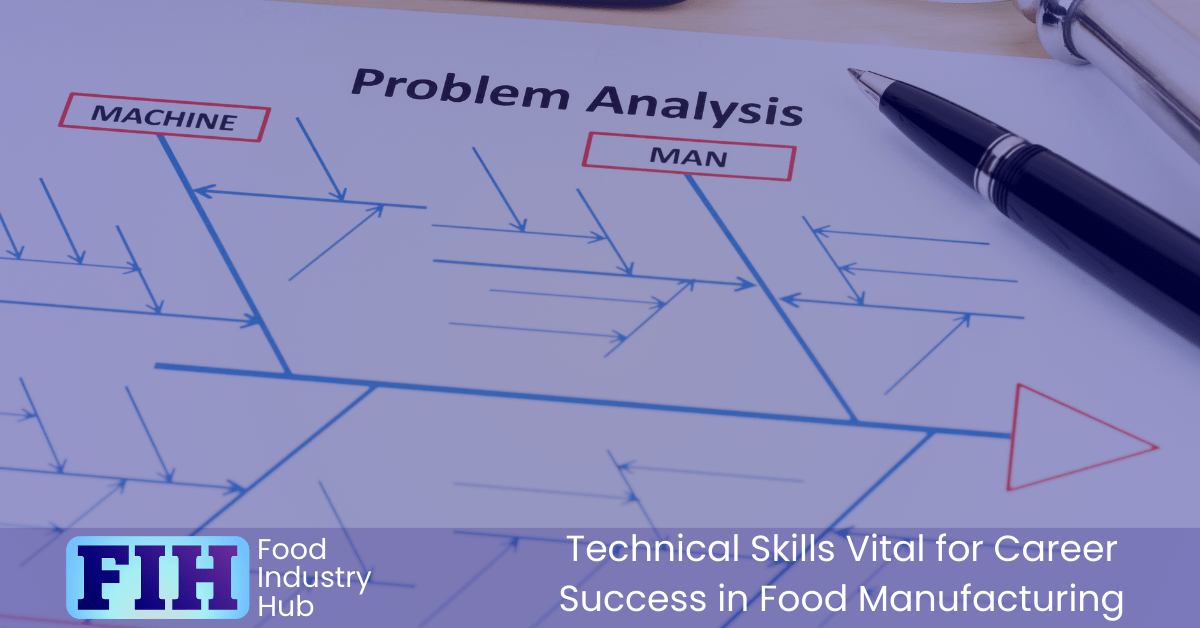
Good Manufacturing Practices (GMPs) and Hazard Awareness
You need to understand how prerequisite programmes from the HACCP plan are implemented in the production facility.
Keeping abreast of best practices and industry standards is crucial for success in food manufacturing.
Actively spotting potential hazards and being vigilant in hazard recognition are vital skills for ensuring product safety and quality.
Understanding How Prerequisite Programmes from The HACCP Plan Are Applied in The Factory
Effective implementation of prerequisite programs such as allergen control and cleaning programmes is crucial for ensuring the success of the HACCP plan – and should be well represented in ongoing operations.
Good Manufacturing Practices ensure products are consistently produced and controlled according to industry best practices. This includes maintaining a clean and hygienic production area, proper equipment maintenance, and training employees on safe food handling practices.
Hazard awareness involves identifying potential risks in the manufacturing process that could lead to contamination or foodborne illnesses. This includes recognising physical, chemical, allergenic, and biological hazards, and implementing measures to control or eliminate these risks.
Maintaining an Awareness of Best Practice and Industry Standards
Maintaining an awareness of best practice and industry standards, particularly regarding Good Manufacturing Practices (GMPs) and hazard awareness, is essential for ensuring the quality and safety of food manufacturing processes. Adhering to GMPs involves following established guidelines to guarantee that products are consistently produced and controlled according to quality standards.
By being well-versed in GMP requirements, you can ensure that processes are conducted in a manner that minimises risks and maintains the integrity of the final product.
Having a strong understanding of hazard awareness is crucial in food manufacturing. Hazards can arise from various sources such as biological, chemical, allergenic, or physical factors that can compromise the safety of the food supply.
Being vigilant about potential hazards and staying up to date with industry standards enables you to implement preventive measures effectively and uphold a safe working environment.
Proactively Identifying Hazards
GMPs provide a framework for maintaining cleanliness, proper sanitation, and appropriate handling of food products to prevent contamination and hazards. By strictly following GMP guidelines, you can minimise risks associated with foodborne illnesses, spoilage, and product recalls, thus safeguarding consumer health and upholding the reputation of the company.
Hazard awareness involves recognising potential sources of contamination or danger in the production environment. This includes identifying physical hazards like foreign objects in food, chemical hazards from cleaning agents, and biological hazards such as bacteria. Regular training on hazard identification and control measures is essential to empower employees to actively spot and address risks before they escalate.
Practicing Awareness and Knowing What to Look For
By practicing awareness, you can actively participate in maintaining a safe and efficient production environment. Understanding the principles of GMPs, such as proper sanitation procedures, equipment maintenance, and employee training, is crucial for upholding product quality and safety.
Knowing what to look for in terms of hazard identification is fundamental in preventing contamination and ensuring consumer protection. By being vigilant and proactive in hazard identification, you can mitigate potential threats to food safety and uphold regulatory compliance.
Continuously honing your hazard awareness skills through training and hands-on experience will contribute to a successful career in food manufacturing.

Understanding of Pest Control and Signs of Pest Activity
To excel in the food manufacturing industry, you must understand the importance of pest control and be able to recognise signs of pest activity swiftly.
Your ability to communicate effectively with pest control technicians, identify potential pest issues, and implement recommended solutions will play a crucial role in maintaining a hygienic production environment.
Being Able to Interact Effectively with Pest Control Technicians
With a thorough grasp of pest control principles and the ability to recognise signs of pest activity, you can effectively engage with pest control technicians. Understanding the importance of pest control in food manufacturing is crucial for maintaining high-quality standards and ensuring the safety of food produced.
By being able to communicate effectively with pest control technicians, you can effectively convey detailed information about potential pest issues, recent pest activity, and any specific concerns related to the production environment.
Engaging with pest control technicians requires a collaborative approach. You should be prepared to discuss any signs of pest activity that you have observed, such as droppings, gnaw marks, or unusual odours. Providing detailed information can help pest control technicians tailor their approach to address the specific pest challenges your facility may be facing.
Your interactions with pest control technicians should be proactive. By scheduling regular inspections and promptly addressing any pest-related issues, you contribute to a proactive pest management approach that can prevent infestations and safeguard the integrity of your food manufacturing processes.
Spotting The Signs of Pest Activity
Recognising the signs of pest activity is crucial for maintaining a pest-free environment in food manufacturing facilities. By being vigilant and observant, you can help prevent infestations that could compromise the safety and quality of the products being produced.
One of the key indicators of pest activity is the presence of droppings or urine, which may be found near food storage areas, on work surfaces, or along walls. Additionally, gnaw marks on packaging, walls, or wiring suggest rodent activity.
Smears or grease marks along walls or floors can indicate the movement of pests such as rats. Unusual odours, particularly musty or urine-like smells, could also signal the presence of pests.
Keep an eye out for nests or burrows in secluded areas, as these are signs of active pest populations. Regular monitoring and training staff to recognise these signs are essential components of a comprehensive pest management program in food manufacturing facilities.
Facilitating and Cooperating with Pest Control Activities
By being able to recognise the early indicators of pest presence, such as droppings, gnaw marks, unusual odours, or sightings of live pests, you can play a proactive role in preventing infestations and maintaining a safe production environment.
Significantly, prompt identification of pest activity allows for timely intervention, reducing the risk of contamination of the manufacturing environment and products.
In food manufacturing, pest control is a collaborative effort that requires effective communication and coordination between employees and pest control professionals. By understanding the signs of pest activity, you can provide valuable information to pest control contractors, enabling them to develop targeted strategies for eradication.
Your vigilance in spotting pest activity can help in implementing preventive measures to deter future infestations, safeguarding the quality and safety of food products.
Coordinating Actions Recommended by Pest Control Contractors
A thorough grasp of pest control methods and the ability to identify signs of pest activity are paramount when coordinating actions advised by pest control contractors. In food facilities, pest control is a critical component of the safety and quality system.
Understanding common pests like rodents, insects, and birds – as well as recognising signs of their presence such as droppings, gnaw marks, and nests – is crucial for effective pest management.
When pest control contractors recommend specific actions to address infestations or prevent future pest problems, it’s essential to act swiftly and decisively. Coordinating tasks such as sealing entry points, implementing sanitation measures, and deploying traps or baits requires attention to detail and adherence to industry regulations.
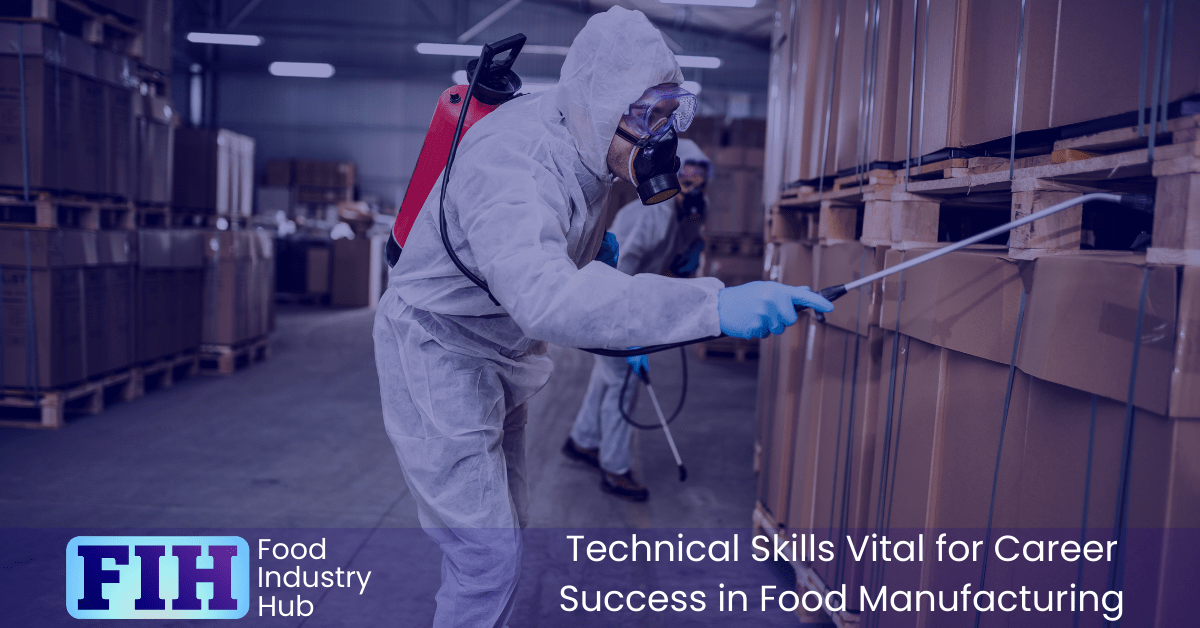
Process Control Skills and Problem-Solving for Food Safety and Quality
You should understand the distinction between QCPs and CCPs to effectively manage food safety and quality.
By linking product variations to specific manufacturing processes, you can pinpoint areas for improvement.
Enhancing control points to minimise variations or address potential risks will help you develop innovative solutions for process optimisation.
Understanding The Difference Between QCPs And CCPs
Quality Control Points (QCPs) are specific checkpoints in the production process where quality parameters are monitored but don’t directly affect food safety. These points are crucial for ensuring consistency and meeting quality standards.
Critical Control Points (CCPs) are steps in the process where control can be applied to prevent, eliminate, or reduce food safety hazards to acceptable levels. CCPs are essential for ensuring that the final product is safe for consumption, and the HACCP team is responsible for determining CCPs.
Proper training and adherence to established protocols are essential to effectively manage QCPs and CCPs in food manufacturing processes.
Associating Product Variation with Manufacturing Processes
When analysing manufacturing processes, you have to effectively associate product variation with specific stages of production to ensure food safety and quality parameters are understood and appropriately controlled.
Understanding how variations in raw materials, equipment performance, or environmental factors can impact the final product is essential for maintaining consistency and meeting quality requirements.
By identifying potential sources of variation and linking them to specific manufacturing steps, you can proactively implement control measures to mitigate risks and ensure product quality.
Process control skills play a significant role in this – enabling you to monitor production parameters, detect deviations, and make real-time adjustments to maintain product integrity.
Problem-solving abilities are also vital for addressing unexpected variations promptly and effectively, minimising the impact on product quality.
Improving Control Points to Reduce Variation or Mitigate Risks
Enhancing control points within food manufacturing processes is crucial for reducing variation and mitigating risks associated with product quality and safety. By improving process control skills and problem-solving techniques, you can ensure that your products meet the highest standards of safety and quality.
One way to enhance control points is by implementing robust monitoring systems that allow for real-time data collection and analysis. This enables you to detect any deviations from set parameters promptly and take corrective actions before they escalate into larger issues.
Conducting regular audits and inspections can also help identify potential weak points in the process that may lead to variation or pose risks to product quality.
Investing in your process control and problem-solving skills can enable you to address issues effectively and proactively. By developing the necessary skills and knowledge, you can ensure consistent product quality and safety standards are maintained.
Creative Problem-Solving for Process Improvement
In the food industry, unexpected challenges can arise that may impact product quality or safety. Being able to think outside the box and come up with innovative solutions is key to ensuring that manufacturing processes run smoothly and meet the necessary standards.
Creative problem-solving involves analysing complex situations, identifying root causes of issues, and developing effective strategies to improve processes. This skill is particularly important in maintaining food safety and quality standards, as it allows for quick and effective responses to any deviations from the norm.
Whether it’s troubleshooting equipment malfunctions, implementing new quality control measures, or finding ways to optimise production efficiency without compromising safety, creative problem-solving skills are invaluable in the food manufacturing industry. By proactively addressing challenges and continuously seeking opportunities for improvement, you can contribute to a successful and thriving manufacturing operation.

In Summary
Possessing strong technical skills is crucial for success in the food manufacturing industry. From understanding industry standards and regulations to effectively managing quality control and critical control points, these skills are essential for ensuring product safety and quality.
By honing your skills in areas such as HACCP principles, record-keeping, fault resolution, and GMP implementation, you can pave the way for a successful and rewarding career in food manufacturing.

Further Resources
Food Industry Hub serves the food industry with a range of digital resources for the benefit of both commercial food manufacturers and food industry professionals.
For food manufacturers, we offer integrated management systems that give every user a direct interface with your QMS.
For food industry professionals, we provide an extensive signposting service in addition to informational content we hope you’ll find useful as you face new professional challenges. We have very ambitious plans to expand the range of services offered, and currently present informational content on management, safety and quality, food safety and quality culture, and professional success.
